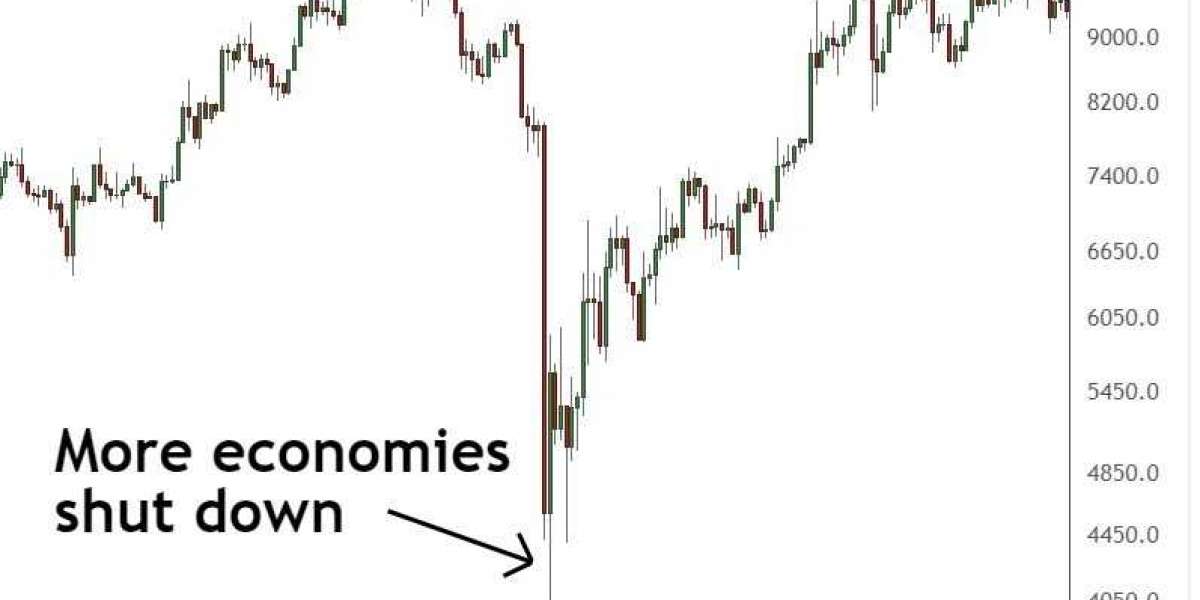Although not all corrections result in crashes, every crash began as a correction.
A market correction is a very brief decline in performance from the most recent local peak of between 10% and 20%. Corrections in the market are followed by an upward trend in the chart. Corrections may last a couple of days, a week, or even a few months. Corrections cause market drops that are not as severe as crashes. They must also be distinguished from market reversals and troughs.
Given its tiny size and typical meaning of the cryptocurrency having surged too far from its established trend, the collapse is referred to as a "correction." Compared to stock markets, the cryptocurrency market experiences corrections more frequently, and since crypto is so volatile, they can occur quickly.
While corrections typically result in recoveries, they can also cause bear markets, which are more severe drops.
Differences between a market correction and a bear market
Bear markets are more severe market corrections that see drops of at least 20%.
According to popular belief, a bear market gets its name from the way bears swipe their paws downward to attack their prey. Therefore, bear markets are associated with declining and falling prices.
The magnitude of the loss is the key distinction between a market correction and a bear market. There will be a loss of 10% or more in a very shallow market correction. A bear market instead of a correction is present if the decline is more severe and exceeds 20%.
Comparison of a cryptocurrency market correction and a crash
A market crash is a sharp (over 20%) decline in the market that can occur in a single day or over the course of days, weeks, or even months. A correction is a brief event of a less severe nature.
After a crash, the market is said to be in a bear market if it keeps falling for several months or several years. For instance, a year-long bear market that lasted until January 2019 was caused by the early 2018 crypto market slump.
In contrast to the bear market of 2018, the market downturn from May to July 2021 was relatively brief but nonetheless highly severe. The market began to rise again in late June after beginning in mid-May.
Why the Correction Occurs
A market correction may start for a variety of uncertain and lengthy reasons. The reasons why the correction is taking place are not always evident, and not all analysts would concur with that statement.
Investors may often be prompted to sell when fresh, unfavorable catalysts are introduced. For instance, speculation about a possible conflict breaking out or the declaration of a pandemic can frighten investors and cause them to sell.
Be mindful of how rumors are frequently the catalyst. When the pandemic was announced in March 2020, the stock market fell. Political leaders acted to keep people at a remove as reality set in by stifling their economy. The economy had barely started to contract at that point, but the markets started to rebound. Prior to the action taking place, the rumor is usually corrected (pandemic announced, different unknowns) (economies shut down).
Conclusion
Market reversals are a regular occurrence in financial market cycles. These adjustments are necessary to get valuations back in line with trend growth and longer-term trends.
When trading, you can look for signs of impending corrections so you can take precautions to safeguard your capital. Don't freak out if you find yourself unprepared. The stronger the crash, the more unprepared traders or those making snap judgments during the crisis intensify it. Consider how you may improve your preparation for the next time while you wait for the rebound.




Mimi 5 w
Nice